Abandoned History: General Motors' Turbo-Hydramatic Transmissions (Part I)

A few weeks ago, we concluded Abandoned History’s two-part coverage of the Chrysler UltraDrive transmission. Within the comments was a request for more transmission coverage of an equally abandoned nature. Let it be so! Come along as we discuss the vast automatically shifted expanse that was the Turbo-Hydramatic transmission family, by General Motors.
The Turbo-Hydramatic was a consolidation solution at GM in the early Sixties. The new automatic was intended to replace the aged Hydra-Matic transmission, as well as the Dynaflow, a Buick box. The original Hydra-Matic was developed by Oldsmobile and Cadillac and was introduced for the 1940 model year. An important step forward, that gearbox was the first mass-produced transmission that was both fully automatic and meant specifically for passenger cars. It was also the first automatic that used hydraulic fluid. A great success, the Hydra-Matic was used in Cadillacs, and Oldsmobiles, and was an option in Pontiacs in the late Forties.
Developing a high-tech automatic transmission was a costly enterprise, and GM sold the Hydra-Matic to smaller and leaner companies like Hudson, Nash-Kelvinator, Willys, Kaiser, Lincoln, and even overseas at Austin. They applied the Hydra-Matic to the luxurious Vanden Plas Princess through 1968.
Dynaflow appeared later than Hydra-Matic and debuted for the 1948 model year. A transmission exclusive to Buick, it was initially available only on the high-end Roadmaster. A two-speed box, Dynaflow used a torque converter at all times. Low gear was held through 60 miles per hour when the driver shifted to Drive to put the transmission into second. It was considered an automatic even though a shift was required because there was no clutch.
Dynaflow was very smooth, but also very inefficient and slow. At the time, Buick engineering was permitted to emphasize smoothness above all else: Other automatics of the period were largely jerky and unpleasant. The Dynaflow was not exceedingly popular, and absolutely needed replacement by the Sixties.
The so-called Turbo-Hydramatic (hereafter THM) built on the name of the original from the Forties and continued as a three-speed auto for passenger car applications. In reality, though it shared a familial name it was not mechanically related to the old Hydra-Matic.
The first of the THM family was the 400, which quickly became the legendary global star of the THM line. Its first usage was in Cadillacs for 1964. Worth noting, the same transmission when used in a Buick was rebranded as the Super-Turbine 400. The transmission was exclusive to Cadillac and Buick for its first year and spread to Oldsmobile, Pontiac, and some larger Chevrolet models in 1965.
THM400 was made of a combination of aluminum and iron and weighed 135 pounds without fluids. Its entire case was made of cast aluminum, and the bell housing was integrated into the transmission. Key to the THM400’s internal strength was a cast-iron center support, which suspended the transmission shafts.
The new Turbo-Hydramatic three-speed automatic used the Simpson gear design. The Simpson gearset is a compact and mechanically simple design, and it requires a minimal number of bearings compared to other designs. That meant it was lighter, cheaper to produce, and had less internal friction due to its low number of bearings. The design quickly became the standard in automatic transmissions and was used (earlier) in Chrysler’s TorqueFlite line.
Ready to get into the transmission weeds? Early examples of the THM400 produced from 1964 to 1967 sometimes had a special feature. It was not implemented on all examples, but a good number had a “Switch-Pitch” torque converter. The Switch-Pitch converter’s party piece was its variable-pitch stator. Hydraulics changed the angle of the fins on the stator of the converter, which moved the stall speed up or down by up to 1,000 RPM while in motion.
A revised stall speed was effectively the same as altering the gears of the transmission or the rear end’s ratio while in motion. A high stall was advantageous for fast acceleration from a standstill, and the converter automatically lowered the stall speed for efficient highway cruising. GM used the special converter previously on examples of the Dynaflow from 1955 to 1963, and on the two-speed Super Turbine 300 from 1964 to 1967. The innovative Switch-Pitch was discontinued after 1967. The probable cause of death was tied to high manufacturing costs on a component that was not a necessity at the end of the day.
Even without the special torque converter, the THM400 continued on in overall GM usage. Most examples were of the Cadillac, Oldsmobile, Buick, and Pontiac variety. Cars from those four brands used one bellhousing design for the THM400. Chevrolet put the THM400 in its heavy-duty trucks and vans for a time and used a different bellhousing. Its use was limited on Chevrolet passenger cars and normally reserved for high-performance small-block vehicles, such as the Corvette.
Outside of GM vehicles, the THM400 built a reputation for utmost toughness, reliability, and longevity. It became a favorite of other brands that required an automatic transmission capable of shifting big power, torque, weight, or some combination of all three. We’ll start with British examples.
Between 1965 and 1980, Rolls-Royce used the THM400 in the Silver Shadow. After that, they ported it over to the Shadow’s successor the Silver Spirit, which remained in production through 1992. Because Bentley was under the same ownership at the time, the equivalent Flying B offerings with the THM400 were the T1, T2, Mulsanne, Brooklands, Turbo R, Corniche, and Continental. Jaguar also implemented the THM400 in its 12-cylinder XJ12 from 1977 through 1994, and on the XJ-S from 1977 through 1990.
Ferrari supplied its first-ever automatic transmission upon the introduction of the 400 Automatic coupes in 1976 and used the THM400 to wrangle the V12’s power. The 400 was updated to the 412 in 1985 and continued to use the THM through the model’s cancellation in 1989.
The THM400’s most illustrious usage was probably in Japan when it was selected for a very special limousine by the name of Nissan Prince Royal. The Royal was built between 1966 and 1967, a total of five examples were made especially for the Japanese imperial household. All five cars required a transmission capable of handling the 6.4-liter V8 engine, and THM400 was the obvious choice. The Royal is worth its own Rare Rides entry.
And finally, we circle back to some additional American THM400 usage outside GM. AM General found a use for the THM, where it became the automatic of choice for the Humvee and earlier examples of the civilian Hummer H1. AMC applied it to various models within the SJ platform, like the large and in charge Wagoneer and Grand Wagoneer, as well as the Gladiator pickup. Given AMC’s limited budget, early THM400s in Jeeps required an adapter between engine and transmission bell housing to make it fit. AMC ordered up its own housing later for inline-six and V8-powered Jeeps.
But nothing lasts forever, and by the turn of the Eighties, the THM400 was being phased out for passenger car applications. It was heavy, and the government made new demands for efficiency in passenger cars that weren’t friendly to a Sixties rear-drive three-speed transmission. Later in THM400’s life, it changed identities, spawned some updated variants, and set the stage for the rest of the THM transmission line. More on that in Part II.
[Images: GM, Rolls-Royce, Bentley, Jaguar, Jeep]

Interested in lots of cars and their various historical contexts. Started writing articles for TTAC in late 2016, when my first posts were QOTDs. From there I started a few new series like Rare Rides, Buy/Drive/Burn, Abandoned History, and most recently Rare Rides Icons. Operating from a home base in Cincinnati, Ohio, a relative auto journalist dead zone. Many of my articles are prompted by something I'll see on social media that sparks my interest and causes me to research. Finding articles and information from the early days of the internet and beyond that covers the little details lost to time: trim packages, color and wheel choices, interior fabrics. Beyond those, I'm fascinated by automotive industry experiments, both failures and successes. Lately I've taken an interest in AI, and generating "what if" type images for car models long dead. Reincarnating a modern Toyota Paseo, Lincoln Mark IX, or Isuzu Trooper through a text prompt is fun. Fun to post them on Twitter too, and watch people overreact. To that end, the social media I use most is Twitter, @CoreyLewis86. I also contribute pieces for Forbes Wheels and Forbes Home.
More by Corey Lewis
Latest Car Reviews
Read moreLatest Product Reviews
Read moreRecent Comments
- Lou_BC Well, I'd be impressed if this was in a ZR2. LOL
- Lou_BC This is my shocked face 😲 Hope formatting doesn't fook this up LOL
- Lou_BC Junior? Would that be a Beta Romeo?
- Lou_BC Gotta fix that formatting problem. What a pile of bullsh!t. Are longer posts costing TTAC money? FOOK
- Lou_BC 1.Honda: 6,334,825 vehicles potentially affected2.Ford: 6,152,6143.Kia America: 3,110,4474.Chrysler: 2,732,3985.General Motors: 2,021,0336.Nissan North America: 1,804,4437.Mercedes-Benz USA: 478,1738.Volkswagen Group of America: 453,7639.BMW of North America: 340,24910.Daimler Trucks North America: 261,959



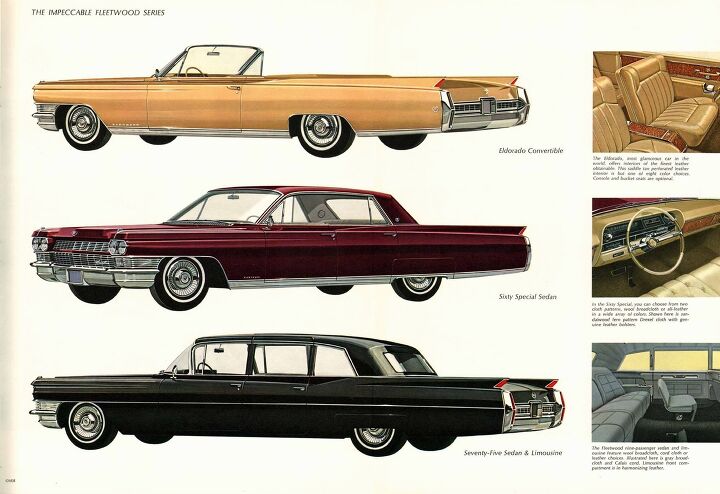























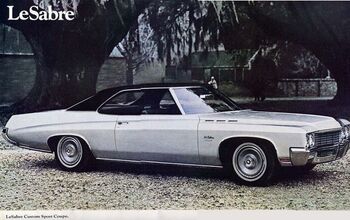
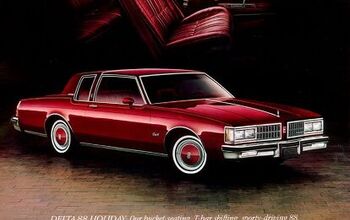
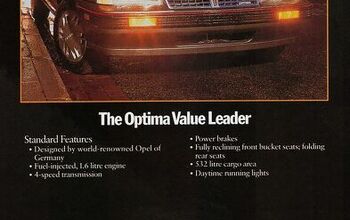
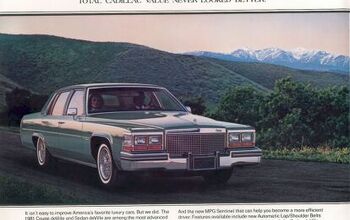











Comments
Join the conversation
Very nice work Corey.
Great article, however you have completely neglected to mention GM usage of the transmission outside of North America. In Australia GM's local subsidiary Holden used these transmissions extensively in their locally manufactured cars from 1971 until 1977 when they were replaced by the Turbo 350, and later the locally manufactured Tri-Matic (Marketing name of the THM180 in Australia). First they were fitted behind the imported 350CI Chevy V8, however later they were fitted behind the Holden manufactured 308CI 5.0L V8. The Holden V8 blocks were cast with either the "Turbo" bellhousing pattern at the back of the block, or the smaller "Tri-matic" pattern which was fitted to the engines supplied with manual or later Tri-matic automatic transmissions. The THM400 equipped cars were noted for their smooth shifting and bullet proof reliability, although they certainly sapped more horsepower and used more fuel than the later Tri-matic cars.